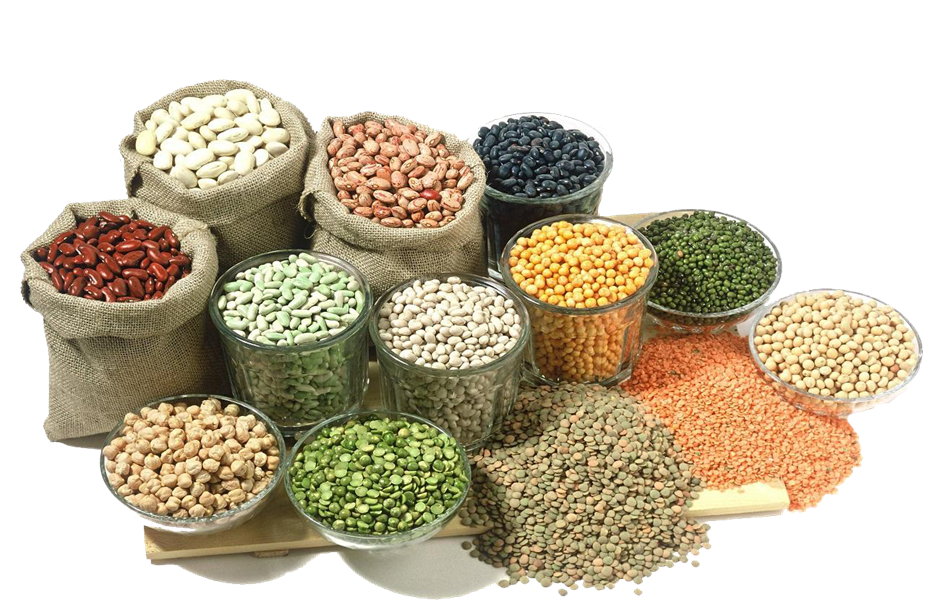Antinutrients
in Cereals
Cereals are very healthy and nutritious due to the presence
of fibers, carbohydrates, proteins, vitamins, and minerals. In Addition to
these nutrients, they contain substances called antinutrients. Antinutrients prevent the digestion of nutrients. These
reduce digestibility and hinder the absorption of micro and macronutrients.
Major anti-nutritional factors, found in cereals and
grains include saponins, tannins, phytic acid, gossypol, lectins,
protease/amylase inhibitor, and goitrogens. Trypsin and phytates are inhibitors
present in legumes and cereals, reducing the digestibility of proteins and minerals
in the body. Hence causing micronutrient malnutrition and mineral deficiencies
leading to different diseases.
Therefore, efforts are made to reduce or eliminate these antinutrients for proper assimilation. i.e. Food processing techniques fermentation, de-branning, autoclaving, germination, malting, soaking, cooking, and extrusion can greatly reduce the number of antinutrients in cereal. Using these methods alone or in combination, it is possible to reduce the level of anti-nutrients in cereal commodities. Several anti-nutrients in cereals hinder the extrusion process and cooking process. Around the world, cereals are frequently eaten as a staple diet and offer vital elements such carbohydrates, fibre, vitamins, and minerals. However, some cereals include anti-nutritional substances that may hinder the absorption of nutrients or have negative health effects. Here are a few instances of anti-nutritional elements that can be found in cereals.

Saponins:
Saponins are non-volatile secondary metabolites found
in cereal crops. Saponins are steroids
or triterpenes having a sugar moiety in them. Triterpenoid saponins are usually
found in legumes i.e. soybean, peanuts, chickpeas, beans, and lentils. Steroid
saponins are generally present in food plants such as oats. Saponins show inhibitory
activities for enzymes i.e. amylase, glucosidase, trypsin, and chymotrypsin
causing indigestion-related health disorders.
These are not hydrolyzed by human digestive enzymes; therefore, gastrointestinal digestion can be severely affected. Hence saponins reduce the absorption of vitamins forming complexes with various sterols, which would interfere with sterol activity and its absorption in the intestine.

Phytates:
Phytic acid is the main antinutrient found in cereals
and grains. It binds to minerals and forms a complex i.e. calcium, magnesium,
iron, copper, and zinc thus hindering the absorption in the intestines and
digestive system. Phytates are present in whole grain cereals and their derivatives.
i.e. Wheat, Oats, Brans, and their products. Sequester minerals, mainly zinc and iron, thus
act as thieves of minerals.
Previously phytates are considered harmful but a
recent search shows that it is converted into inositol a source of Vitamin B. But
proper treatments, i.e., soaking, roasting and autoclaving, etc., should be
done to destroy its anti-nutrient capacity and enhance nutrient one.
Tannins:
These are phenolic compounds having a molecular weight
greater than 500 Dalton. They have the ability to precipitate proteins. These
are secondary compounds that are formed in the leaves bark and fruit of plants.
They form reversible and irreversible tannin protein complexes that reduce the
protein digestibility as well as absorption of essential amino acids. They are found in cereals i.e. sorghum and
barley.
Research has shown that they accumulate mainly in the bran section of cereals and legumes. When ingested they form complexes with proteins, which lead to the inactivation of many digestive enzymes as well as decreased protein digestibility. Thus, dehulling and soaking seeds will leach down the tannins up to 60-90%. Hence increases the appearance, texture, and digestibility of the grain.

Lectins:
These are sugar-binding proteins, which easily attach
to RBCs and cause agglutination. Lectins are found in cereals and legumes and
are known as glycoproteins. The transportation functions of the enterocyte
would be affected by lectins. Lectins reduce nutrient absorption by binding to
intestinal epithelial cells and damage the intestinal tract, increasing the
bacterial population coming into contact with the bloodstream.
Lectins are found in beans, pulses, lentils, and other
cereals. Hinders bioavailability of nutrients by action on digestive enzymes. Preliminary
soaking and autoclaving before cooking would eliminate the lectin contents. Its consumption causes indigestibility, food
poising, bloating, and gut leaky syndromes.
Ø Protease and Amylase Inhibitors:
It inhibits the proteolytic enzymes. It can bind to
the target proteins in reversible or irreversible both ways. Mostly present in
cereals, legumes mainly soybean. Moist heat and Soaking for 24 hours are
effective in destroying trypsin inhibitors. It will enhance the nutritional
value of proteins. The main protease inhibitor is a trypsin inhibitor in
soybean and other cereals that inhibits the digestion of proteins. In the gut
the hinders digestion and absorption of proteins.
Amylase inhibitors will reduce the activity of
amylase, the digestive enzyme required to break down dietary starches into
absorbable glucose amylase inhibitors will hinder this process. Many plants and
plant food including cereals and legumes contain amylase-inhibiting compounds. i.e. In white bean extract, inhibit the
digestion of carbohydrates, so it may reduce the absorption of glucose in the
body.
Ø
Gluten:
Wheat, barley, and rye are all sources of a group of
proteins known as gluten. Consuming gluten causes the small intestine to become
injured in people with celiac disease, an autoimmune illness. As a result,
there is inflammation, nutrient malabsorption, and a variety of digestive
problems. Another illness that causes symptoms similar to celiac disease but
without the immune response and intestinal damage is non-celiac gluten sensitivity.
Cereals containing gluten must be avoided by anyone with certain diseases in
order to stay healthy.
Strategies to reduce Anti-Nutrients:
Various Strategies are applied according to the nature
of antinutrients i.e. Milling, Autoclaving, Germination of seeds, fermentation,
etc.

No comments:
Post a Comment